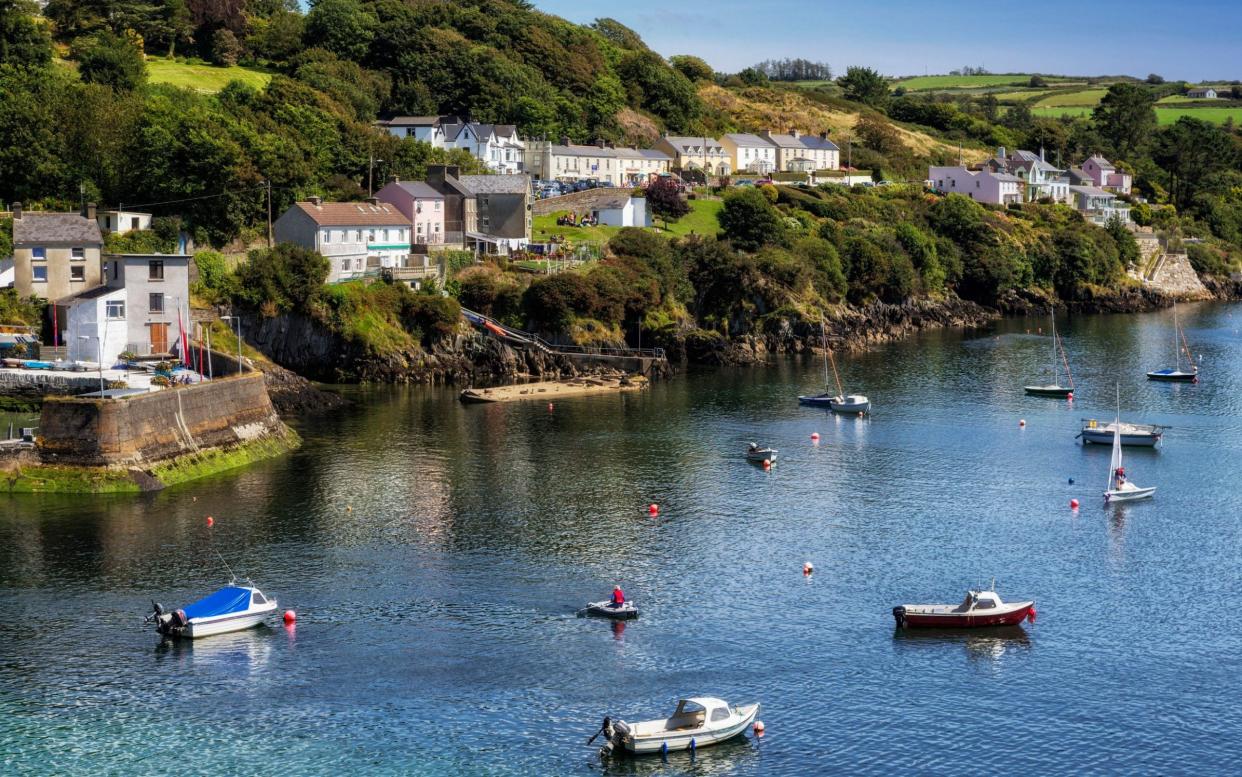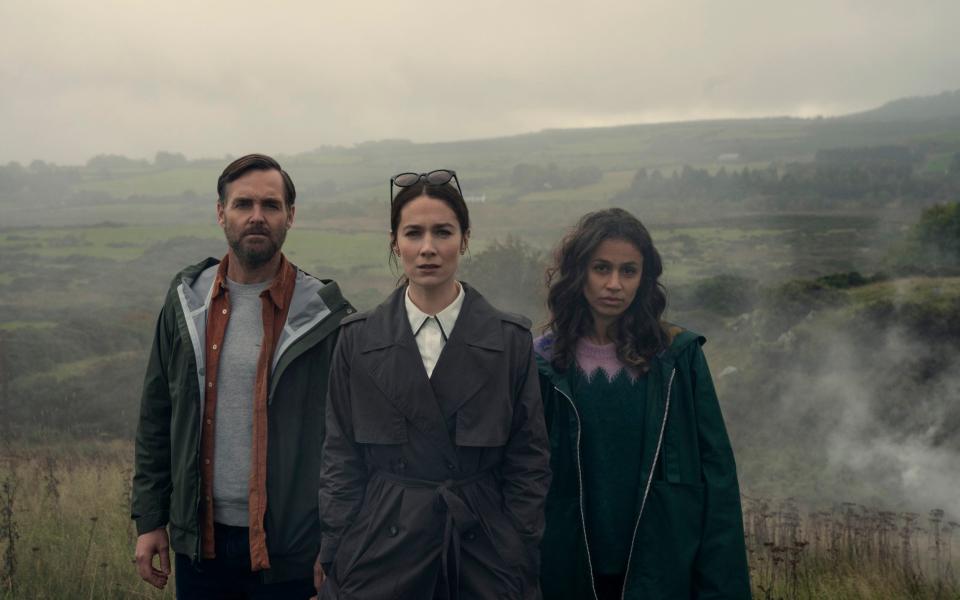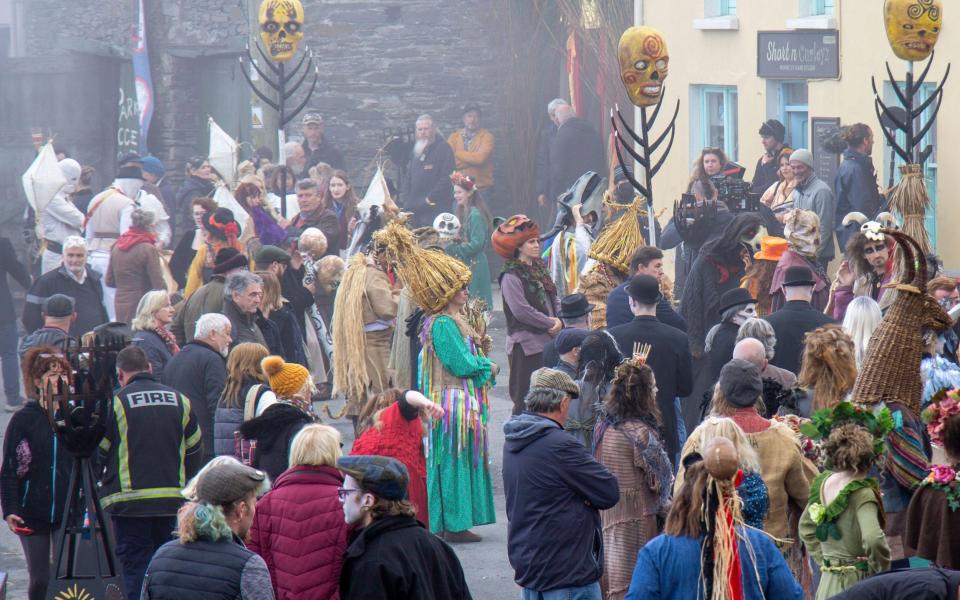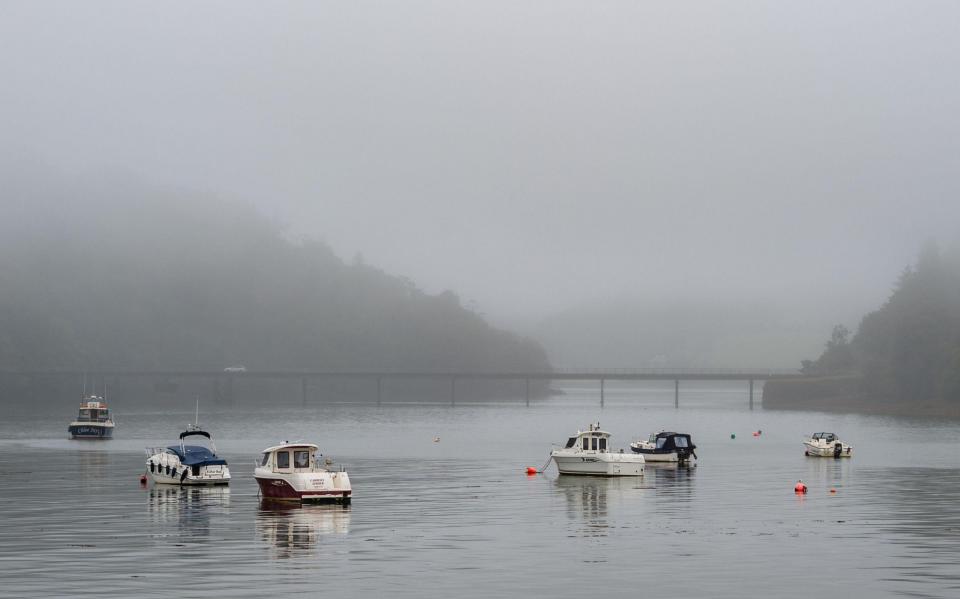The sleepy Irish seaside town that stars in Netflix’s Bodkin

Approaching the rural village of Union Hall in West Cork on an unseasonably wet and windswept Saturday morning in May feels surprisingly dramatic.
Access to this picturesque fishing village is via the one-track Poulgorm Bridge. Dating back to the 1890s, the narrow bridge is just one lane wide, so while I’m passing over, a car awaits their turn on the other side.
No time to hesitate, then, and take a picture of the spectacular views, comprising a vast stretch of water either side of me, enveloped by the rugged cliffs and lush greenery this part of Ireland is famed for. Idyllic sitting on the south-west edge of the doll-shaped country, Union Hall is bounded by wild beauty and an untamed coastline.
I followed the short, sinuous drive from the bridge, curving along the shoreline under a verdant canopy towards Union Hall harbour. With bobbing fishing boats and pastel-hued houses it was not unlike the view of Mevagissey in Cornwall, I thought, only greener, and with fewer people milling about.

The historic bridge served as a backdrop to the 1994 film War of the Buttons, and more recently has featured in Netflix’s new series, Bodkin, a dark comedic thriller executive produced by Barack and Michelle Obama, about a motley crew of podcasters who set out to investigate the mysterious disappearance of three strangers in a quaint, coastal Irish town.
While Bodkin is a fictional town, it’s based on a place like Union Hall, where one of the show’s writers, Alex Metcalf, spent a summer as a teenager – and where most of the coastal scenes are shot.
Bodkin has received mixed reviews in the Irish press, with many viewers enjoying its satirising of true crime podcasts and thrilling plot twists, while others have been triggered by its depiction of Irish life. The Irish Times called it “the worst genre ever – the Irish rural picaresque where booze flows, nuns scowl and everyone enunciates the characters”.
Criticism of this clichéd portrayal of Irish life on screen – where lyrical, country folk roam the rolling hills and cattle-strewn streets, spending half their lives in the pub drinking Guinness and singing ballads or telling yarns – has been well documented. But is Union Hall really like this? What can you expect from a visit?
There are a handful of bed and breakfasts in the tiny village, making it a blissful base to explore all that West Cork has to offer; from the secluded beaches and offshore whale-watching tours to hiking and cycling around the rugged coastline.
Strolling through Union Hall, the sound of the water lapping at boat hulls and the sight of local fishermen loading their catch evoked a sense of peace that only comes with being by the coast.
I strolled around the chocolate-box village, which has a population of just 270. Union Hall is no stranger to tourists in the summer but was blissfully quiet when I visited in May. There was a café, a pub, a convenience store, a fish-and-chips shop and a small restaurant. Basically, everything one could need during a quiet weekend escape.
Despite the inclement weather – Ireland is known for its wet, windswept nature – it is undeniably a very pretty place. Even the little black-and-white street signs (with both Irish and English directions) looked photogenic against the quaint village backdrop.

The first stop on my tour was Dinty’s bar, where the writers of Bodkin spent time. I wanted to take advantage of the coastal location and sample some freshly caught seafood with a Guinness. I enjoyed a brimming bowl of chowder with a perfect pint in the cosy, fire-lit pub and had a pleasant chat with the couple who run the place about the surrealism of their main street being turned into a film set last year.
While most of Bodkin’s coastal scenes were filmed on Union Hall Main Street, the crew also crossed the bridge to the tiny village of Glandore, just a five-minute drive away. Known for its Drombeg Stone Circle, which dates to between 153 BC and 127 AD, plonked dramatically on the clifftop, the fishing village itself is postcard-pretty and features along the Wild Atlantic Way along with Union Hall.
Perched on a top of a hill, the Glandore Inn boasts a panoramic view over the harbour with locally caught sole, monkfish and lobster on the menu. For more active adventuring (and on a drier day) you could walk the scenic 30-minute path between the villages, which snakes around the harbour, allowing for sightings of herons, oystercatchers and sometimes seals.

If you’re visiting for longer than a weekend, the vibrant town of Skibbereen is an 11-minute drive away and home to a busy Saturday morning market and lively pubs playing traditional Gaelic music in the evenings.
The other filming location nearby was a little off the beaten track: Dromadoon Pier. A 20-minute drive away, I ventured there on Sunday morning before heading home to catch a glimpse of the atmospheric waterfront setting that created such beautiful scenes in Bodkin.
It was a solitary drive down a rugged, winding and sloping one-track road, feeling like I was travelling to the edge of the world, which in some ways I was – with its position on the southern fringes of Ireland.
Arriving at the pier, the uninterrupted view of the ocean and tranquil atmosphere were charming, but due to the remoteness I wouldn’t travel solo here again. Though the beauty spot is more populated in the summer months as a great place for boating and kayaking, I’d rather stick to the friendly, cosy ambience of Union Hall.


